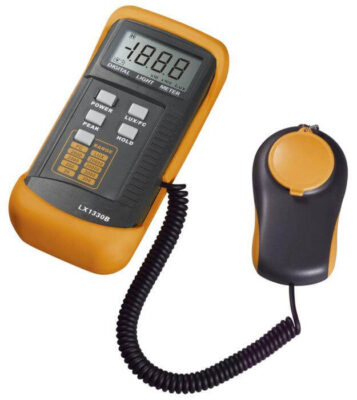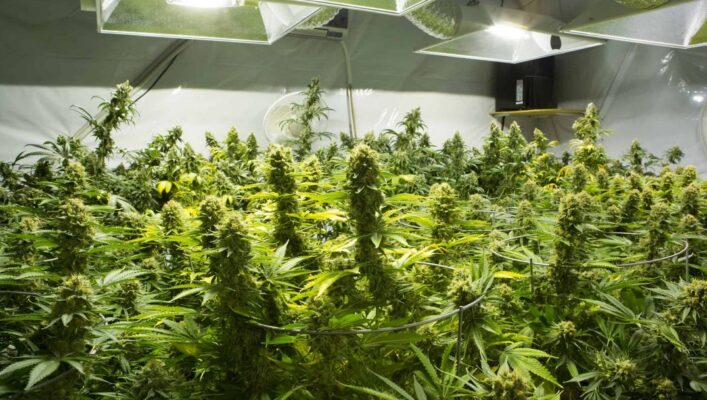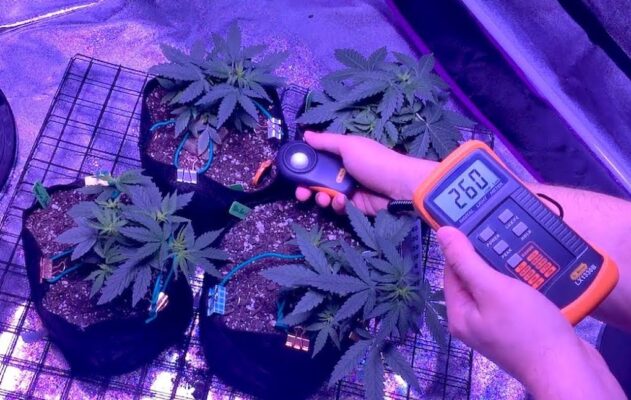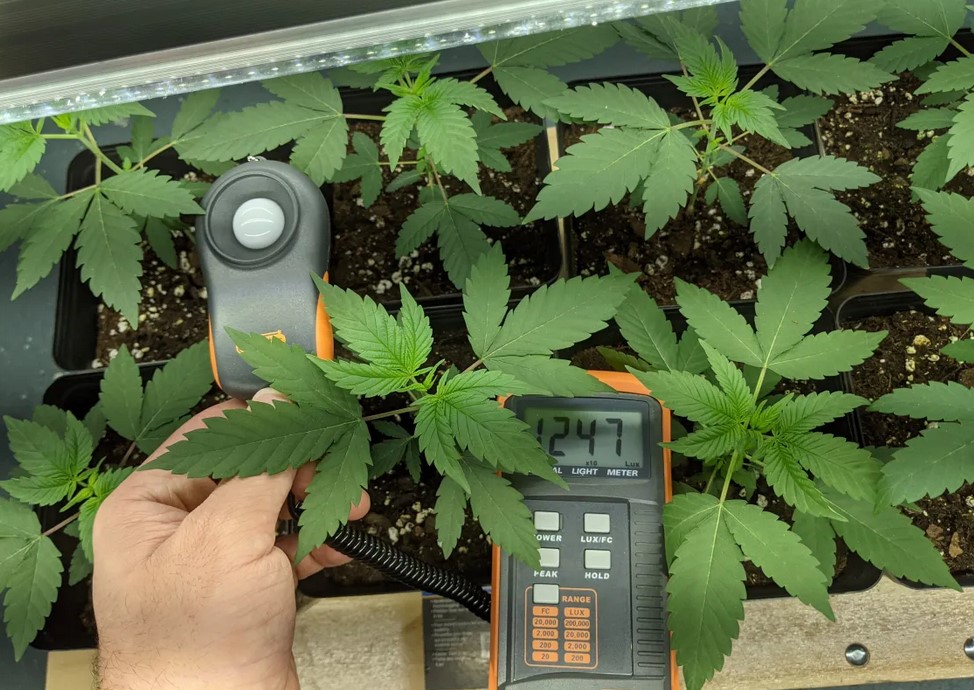Non classé
How To Improve Cannabis Yields Using A Lux Meter
In order to get strong and healthy cannabis plants, you need to take your lighting seriously! Instead of just hanging up a light fixture and hoping for the best, use a lux meter. This will help ensure that your canopy receives optimal yields by knowing how far to suspend your fixture from it.
Are you guessing about the lighting for your cannabis grow? If this is the case, why not use a lux meter to gain greater control? This gadget calculates the amount of light that reaches your plants. It won’t tell you everything, but it’ll do a better job than relying on just your eyes!
Lux and PPFD: The Differences
Before we get into the nitty gritty of lux meters and their usefulness, it’s worth noting an ongoing debate in the cannabis community. While some growers claim to achieve consistent and reliable success with a lux meter, these gadgets have their shortcomings.
Lux is a unit of brightness that we humans perceive with our eyes. Our eye sensitivity differs based on the colors light emits; for example, we are more sensitive to yellow and green wavelengths than blue or red. When human beings are involved, lux becomes useful; however, when discussing plants—and the intensity of light needed for photosynthesis—lux means very little.
In contrast, photosynthetic photon flux density (PPFD) measures the amount of light that hits a square metre each second. This type of radiation is called photosynthetically active radiation (PAR), and it helps users determine the concentration of useful light their plants are receiving. Measured in units of micromoles, PPFD is more accurate than lux becauselux only presents a reading related to illuminance based on human perception.
PAR meters, on the other hand, are significantly more expensive and thus less accessible to home growers. While lux meters don’t measure photosynthetic light density, they do offer useful information when it comes to lighting placement, which may be quite important.
What Is a Lux Meter?

While lux meters are useful to growers, they aren’t the best way to measure light output. Lux meters tell you the intensity of light as seen by human eyes, while PARmeters gauge how many photons driving photosynthesis are hitting leaf surfaces. Clearly, the latter is more helpful within a horticultural context—but better functions come with increased costs. Good PAR meters begin at around €230 and can go over €2,000; meanwhile, rudimentarylux meters can be purchased for as little as €20.
The Benefits of Using a Lux Meter
Discover the potential benefits of a lux meter below and find out if this is something you should invest in for your home garden.
Helps to Increase Yield
The lighting is extremely important in plant growth. However, producing high-quality cannabis indoors necessitates more than simply hanging any sort of light. Using a lux meter may assist you in accurately placing the grow light over your canopy. Growers can measure PAR or spectroradiometer readings under ideal circumstances to obtain precise information on correlation distance using a lux meter or comparable instrument. Lux meters, on the other hand, offer a near approximation to real relative values according to human perception of brightness.
Tells You When You Need to Replace HID Grow Lights
A small investment in a lux meter can save you many hassles down the road. All grow lights, including MH and HPS styles, will eventually lose some of their potency. If you don’t use a lux meter to measure your grow lights, their performance will deteriorate, they’ll dim, and they won’t drive photosynthesis as effectively. Rather of waiting until your light is functioning well enough to check with a lux meter before each cycle to avoid any problems, growers make various investments in order to maintain their operations without incident – so why not include a luxmeter to ensure that your lights are up-to-par?
Prevents Some Plant Problems
It might be a bit of a balancing act to position your light above your canopy. If you place it too near, you run the danger of bleaching and sunburn. Suspend it too far away, and you’ll miss out on colorful, robust development. A lux meter can assist you in determining where to position your lights, resulting in healthier and more productive plants.

What Is the Optimal Amount of Light for Cannabis Plants?
Cannabis plants have distinct nutritional and lighting needs during each phase of their growth cycle; this is true for both nutrition and illumination. Seedlings cannot tolerate too much light, but too little will result in weak and leggy specimens. Plants need a lot of light early on, when they are growing vegetatively. Blending flowers requires a specific kind of light than veg does, however budding plants prefer somewhat less intensity.
How Much Light Do Your Cannabis Plants Require?
The approximate lux ranges below are best for each stage of the growing cycle:
• Clone and seedling stage: 5,000–7,000 lux
• Vegetative stage: 15,000–50,000 lux
• Flowering stage: 45,000–65,000 lux
Although we recommend no more than 65,000 lux during the flowering stage, plants can endure up to 75,000 before any negative effects start. However, it’s important to keep in mind that illuminance values vary greatly from one fixture to another; these numbers should be seen as relative and not absolute.
Some growers think of cannabis as a “the more light, the better” philosophy. This method pays off only until your plant’s brightness reaches 75,000 lux. Light exposure of this intensity can induce several problems. First, it can cause light stress, which has the potential to reduce plant health and yield. This condition is characterized by dried, wrinkled leaves and bleaching. Second, this degree of light intensity will deplete your energy budget without necessarily helping to increase crop production—you will reach a limit of diminishing returns.
Lux for Cannabis: How to Measure the Amount of Light Your Plants Are Getting
Are you prepared to master cannabis luxury? Keep in mind that a lux meter may be used to measure the luminous flux per unit area—illuminance—that your grow light delivers at a specific distance. You may get closer to ensuring that your plants receive enough light exposure throughout their life cycle by using both a lux meter and the data provided above. Follow these steps:
- Take readings across your growing space: Set your light to about 150cm above the floor. Use a lux meter to get a reading from under the light, then measure different points around the space to find any blind spots.
- Rearrange accordingly: If you’re growing many plants, put them in locations that have the most light and shade. Avoid areas that are dark or lacking of light.
- Adjust as you go: Week by week, your plant will develop more. Take measurements around the canopy using your lux meter to determine how much and frequently you should shift your light based on the readings. Use the figures above to ensure that you’re meeting the needs of the plant throughout specific phases of development.

Lux for Weed Plants: A Note About LED
LED grow lights have become a popular choice for many farmers, owing to their lower heat output and low operating costs. Certain types of LEDs, on the other hand, might cause problems with lux readings. All forms of white lights, including HID, CFL, and some LEDs, can be measured by lux meters. Purple LED lights are not included in this list. These models emit purple light due to a combination of blue and red diodes; however, most affordable LED grow lights use this colour combination. If you’re relying on purple LEDs, you’ll have to primarily trust the manufacturer’s information in terms of how much light the product actually emits. Although if you have some extra money, it couldn’t hurt to buy an alternative light meter that is compatible with purple-emitting LEDs.


